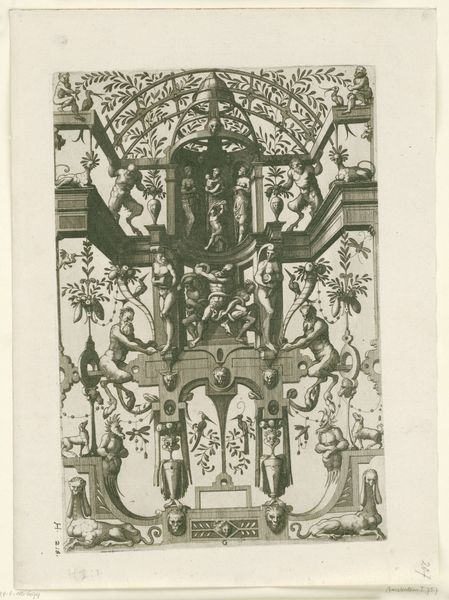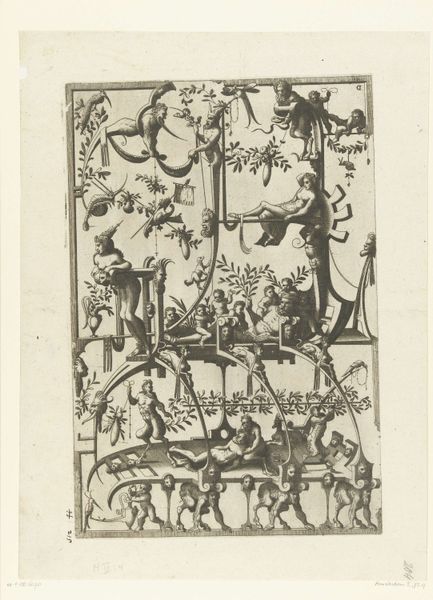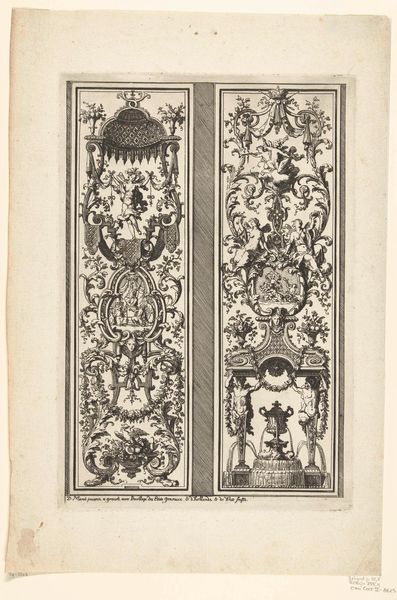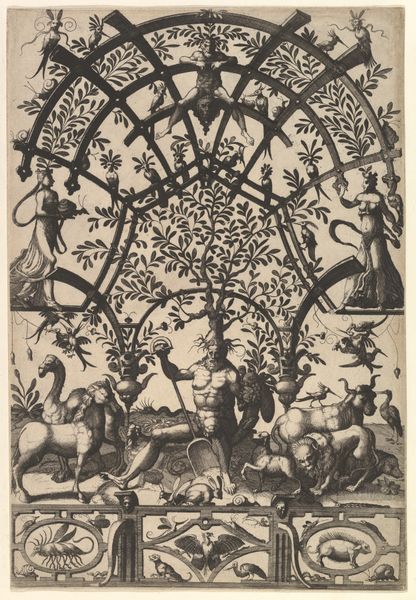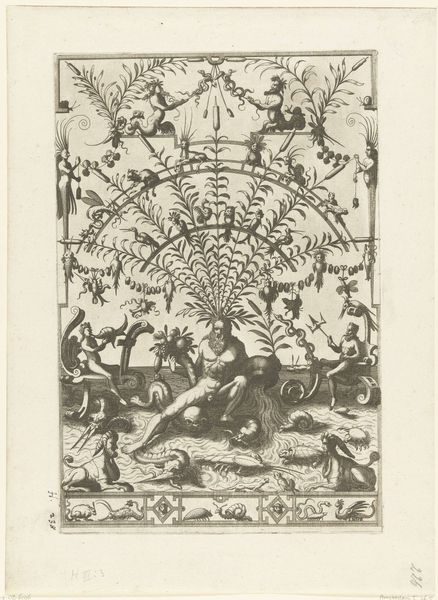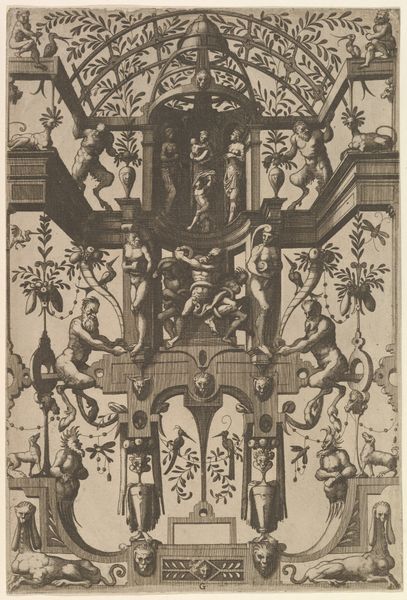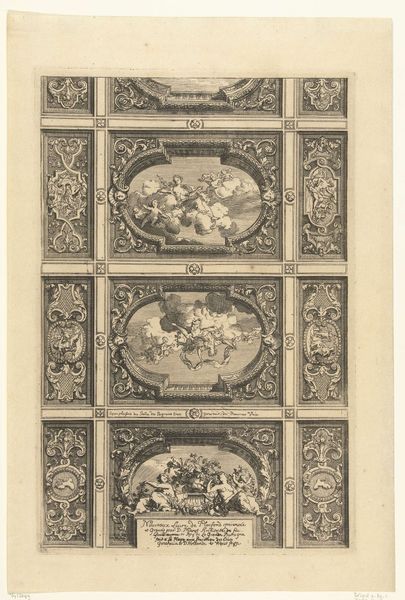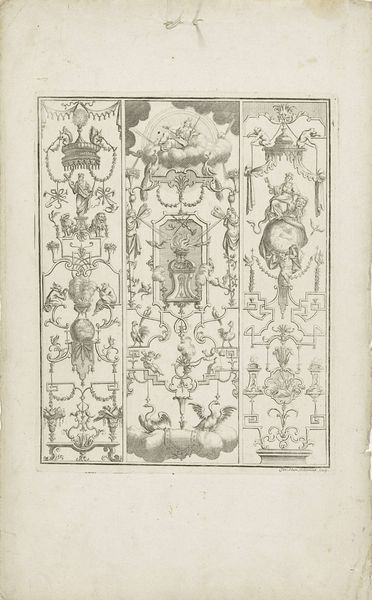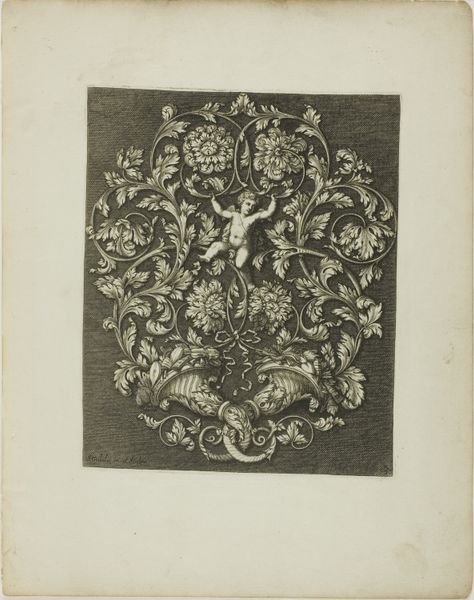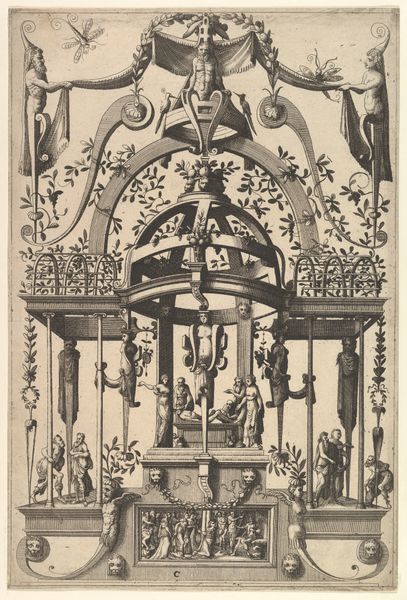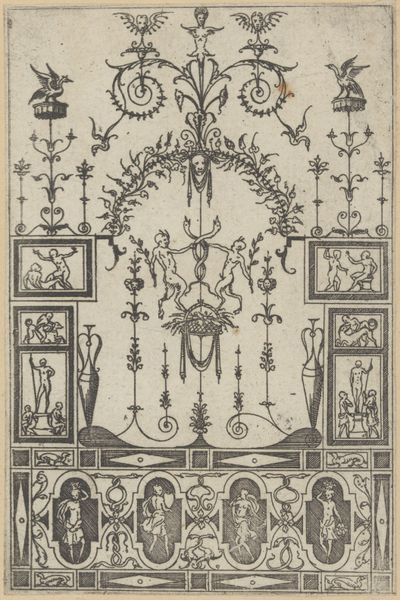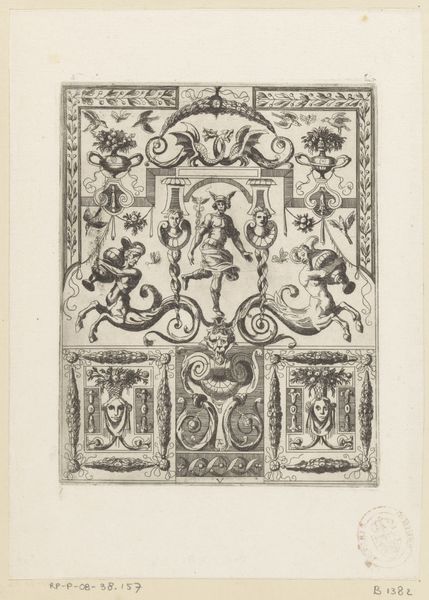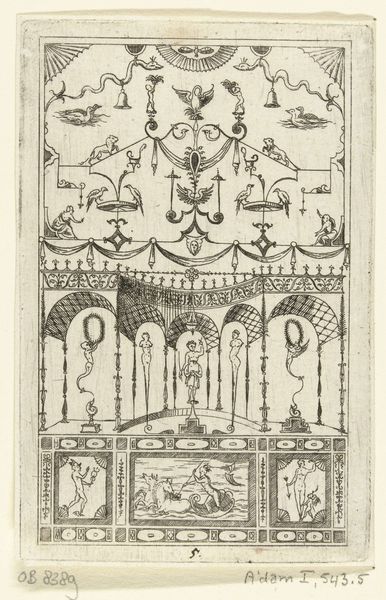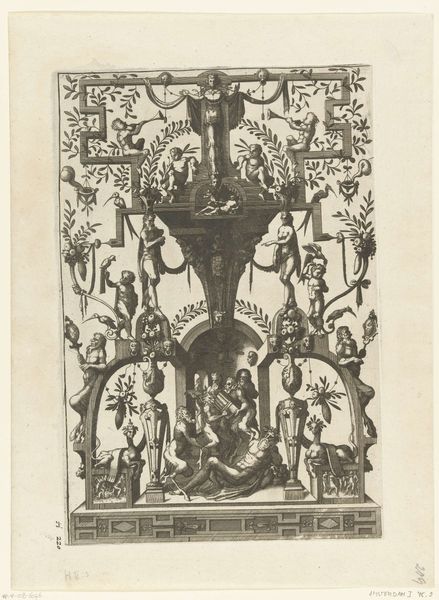
drawing, print, engraving
#
drawing
# print
#
old engraving style
#
landscape
#
figuration
#
11_renaissance
#
personal sketchbook
#
line
#
northern-renaissance
#
engraving
Dimensions: height 306 mm, width 207 mm
Copyright: Rijks Museum: Open Domain
Editor: This intricate print, "Vlakdecoratie: basement met rolwerk en figuren," created around 1557 by Johannes or Lucas van Doetechum, features both engraving and drawing. The dense imagery almost feels overwhelming at first glance. What details stand out to you, and how might we interpret this decorative piece? Curator: From a materialist perspective, it's fascinating to consider the means of production. Engraving, particularly in the 16th century, involved skilled labor and access to specific materials—copper plates, specialized tools, inks. How might the reproducibility of prints like this have impacted the consumption of art and the dissemination of imagery to a wider audience? Editor: That's an interesting point! It democratized access to art, perhaps blurring the lines between 'high art' and more accessible forms. Could this be viewed as a form of early mass production? Curator: Precisely. Consider the social context: these prints served as models for artisans, influencing decorative arts like furniture design or even tapestries. The recurring motifs—the figures, the foliage—they’re not just aesthetic choices but rather building blocks for a visual language employed by craftspeople. Does examining it as a prototype rather than simply a work of "art" change how you perceive it? Editor: Definitely. Thinking about it as a template for other artisans reframes its purpose. It's not just about individual expression, but about contributing to a larger creative economy. The engraving almost becomes a raw material itself! Curator: And notice how the labor isn't just the artist's; it implicates the patron who commissioned it, the artisans who adopted its designs, and even, eventually, the consumers who purchased objects based on it. Thinking about the object, it seems not an isolated “artistic statement,” but the documentation of material practice and distribution. Editor: It's really incredible how analyzing the process and materials opens up so many different avenues of understanding! Thanks for shifting my perspective! Curator: My pleasure. Considering these elements lets us read beyond just iconographic analysis and glimpse the intricate relationship between art, labor, and society in the Renaissance.
Comments
No comments
Be the first to comment and join the conversation on the ultimate creative platform.
